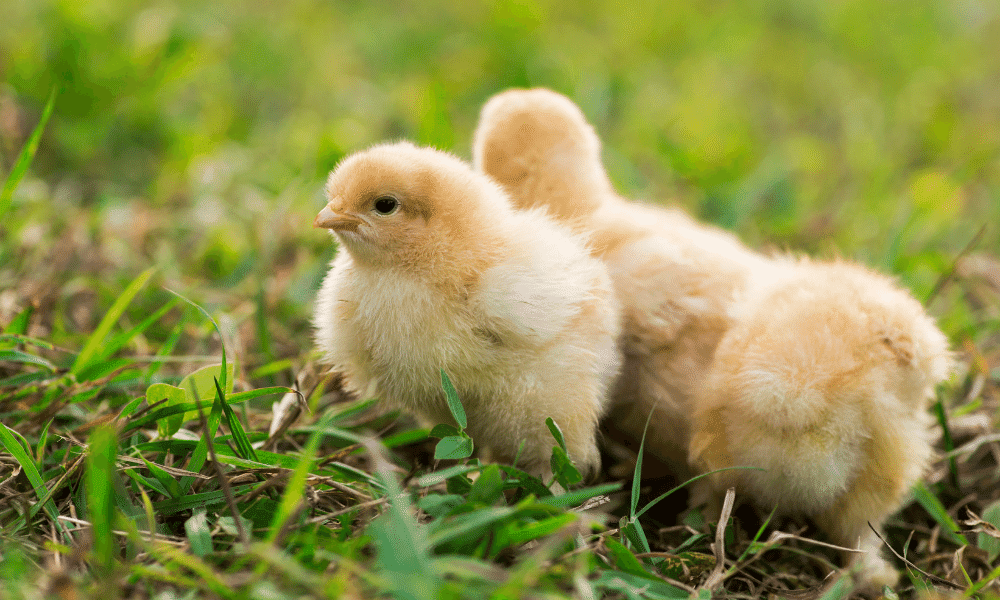The Power Poultry Parasite: Red Mites and How to Get Rid of Them for Good
Mite infestations are something most chicken owners encounter at some point. If you’re frantically Googling "how to get rid of parasites in chicken coop" despite your best efforts, there’s a good chance you’re dealing with red chicken mites—a notoriously tough parasite to tackle. But don’t worry! With a little patience and persistence, you’ll earn your Poultry Red Mite survival badge like a seasoned pro, and before long, you might even be the one writing the next guide on conquering these pesky mites!
What are tiny red mites? Red chicken mites are tiny parasites that live in your chicken coop and feed on birds while they sleep at night (not to be confused with the harmless garden pest, the red spider mite). These tiny red bugs not clover mites, can cause significant harm to your flock. If you notice small red mites in your chicken coop, it’s important to act fast. Don’t underestimate these small, biting pests—red mites can pose a serious threat to your flock. This blood sucking mite feeds on various parts of the chicken, including feathers, skin, and scales, and in severe infestations, they can even be fatal.
Understanding Red Poultry Mites: A Comprehensive Guide
If you’re a poultry owner, you may have heard of red mites, those pesky little red bugs that can wreak havoc on your chickens. We'll explore what red poultry mites are, how they differ from regular mites, the dangers of a bad infestation, and how to get rid of red mites.
Differences Between Red Mites and Regular Mites
While red mites and regular mites share some similarities, they have notable differences, let's break it down!
Lifespan
Red Mites: These tiny pests are survival machines! Red mites can live for several months—even up to 8 months—without a host. That means they can stick around, lurking in your coop long after the chickens leave.
Regular Mites: Lifespans vary depending on the species. For instance, dust mites typically live for 2 to 4 months, and most regular mites don’t survive long without a host.
Dormancy
Red Mites: These mites are pros at going off the grid! Red mites can enter a state of dormancy, making them incredibly tough to eliminate. They can survive for long periods without feeding, just waiting for the right moment to strike.
Regular Mites: Some regular mites can also go dormant, but their survival mode is less intense and varies by species. Their dormancy periods don’t usually last as long as those of red mites.
Behavior
Red Mites: Think of the red chicken mite as the vampire of the chicken world. They’re nocturnal, hiding out in cracks and crevices during the day and coming out at night to feast on your birds. This constant blood-sucking leads to stress, anemia, and even death in severe cases.
Regular Mites: While their behavior varies, many regular mites aren’t as sneaky. They don’t exhibit the same level of hiding or night-time feeding patterns as their red mite counterparts, making them less of a stealthy threat.
Survival Mode
Red mites can go into dormancy, surviving for up to 8 months without a host. They can hang around long after you think they’re gone!
Where Do Red Mites Hide? A Sneaky Parasite’s Favorite Spots!
Red mites are experts at finding hidden nooks and crannies to thrive in, making them a formidable challenge in poultry environments. Here’s where they love to set up shop:
Chicken Coops: Mite Infestation in Chicken Coop
Red mites thrive in the cozy corners of chicken coops. These sneaky little suckers live longer than most mites, which means they can multiply quickly if not caught in time. Once red mites in chicken coop find a foothold, it’s only a matter of time before they take over!
Nesting Boxes: The Perfect Ambush Spot
Nesting boxes are prime real estate for red mites. They love hiding in the bedding and corners, where they can easily latch onto hens while they lay eggs. It’s like a mite buffet right in your coop!
Roosting Areas: Nighttime Feeding Grounds
Red mites are nocturnal, making roosting bars and perches the ultimate feeding grounds. While your birds rest, these bloodsuckers come out to feast. Roosting areas are hotspots for mite activity, and if not treated, they’ll keep your birds stressed and unhealthy.
Cracks and Crevices: The Ultimate Hiding Spots
These pests are masters of stealth! Red mites slip into the tiniest cracks and crevices within the coop walls, floors, and structure. Their ability to hide during the day makes them tough to detect and even harder to eradicate.
Bedding Material: The Mite Breeding Ground
Your coop’s bedding isn’t just for comfort—it’s also a haven for red mite eggs and nymphs. Once they’ve settled in, they’ll continue to hatch and spread, turning your cozy coop into a red mite nursery.
Knowing where red mites hide is the first step to stopping them in their tracks! Be vigilant in these areas to keep your flock safe from infestations.
Marketplace
You might also be interested in...

Shop for chickens, livestock or other farm goods

About Farm Expo Events

Sell Your Chicks and Eggs
Are Red Mites Dangerous? The Danger of a Bad Infestation
A severe infestation of red mites in poultry can lead to significant health issues for your chickens even death. Chickens with red mites may experience:
Anemia: Continuous blood feeding can lead to anemia, weakening the birds.
Decreased Egg Production: Infested hens may lay fewer eggs or stop laying altogether.
Stress and Irritation: The presence of red tiny mites can cause stress, leading to behavioral changes and reduced overall health.
Can chickens die from chicken mites? Yes! Stress can lead to anemia, reduced egg production, and make chickens more susceptible to other diseases. In severe cases, heavily-infested chickens can become droopy, refuse to eat, and die from exhaustion and starvation.
Vampires of the Coop
Red mites are nocturnal feeders, meaning they come out at night to feast on your chickens’ blood—just like tiny vampires!
Image source: Wikipedia
Treatment for Red Mites
Wondering, “How do I get rid of red mites?” You’re in the right place! When treating red mites on chickens, acting fast is key. Here’s how to effectively eliminate them:
Identify the Infestation: Look for signs like irritation, feather loss, or visible mites on your chickens or in the coop. These are early indicators of a red mite problem.
Thoroughly Clean the Coop: Remove all bedding, scrub surfaces, and disinfect the entire coop. Red mites hide in cracks and crevices, so cleaning is essential to eliminate them.
Apply Insecticides: Use a red mite insecticide or red mite spray specifically designed for poultry. Be sure to follow the manufacturer’s instructions carefully for safety and effectiveness.
Top options for red mite treatment include:
Diatomaceous Earth: This natural powder can be sprinkled in nesting boxes and around the coop to dehydrate and kill mites.
Permethrin: A synthetic insecticide safe for poultry housing. It can be sprayed on both the coop and birds, as per the manufacturer’s instructions.
Elector PSP: A biological insecticide with Metarhizium anisopliae, a naturally occurring fungus. This safe and effective solution kills red mites on hens with no egg withdrawal period.
Neem Oil: A natural repellent derived from neem seeds. Dilute and spray on both the coop and birds to repel and kill mites.
Essential Oils: Oils like lavender, tea tree, and eucalyptus act as natural repellents. Dilute and spray them in the coop to help control mite populations.
Pyrethrin: A natural insecticide made from chrysanthemum flowers. It’s safe for poultry and effective against red mites.
Vermiculite: Similar to diatomaceous earth, vermiculite can be used in nesting boxes to manage mite populations.
Dusting Powders: These powders, formulated specifically for poultry, can effectively reduce red mite infestations.
Regular Coop Maintenance: Consistently clean and disinfect the coop. Remove old bedding, clean nesting boxes, and sanitize surfaces to prevent reinfestation.
Heat Treatment: Raising the temperature in the coop can kill mites, as they can’t survive extreme heat. Consider this method if you’re dealing with a severe infestation.
Dusting Your Chickens: Use a safe, approved dusting powder to treat your chickens directly, ensuring it’s suitable for poultry use.
Monitor and Repeat: Red mites are persistent. Regularly check your chickens and coop for signs of mites, and repeat red mite treatment in chickens as necessary until the infestation is fully eradicated.
Tiny but Tough
Red mites are less than a millimeter long, but don’t let their size fool you—they’re one of the toughest parasites to eliminate in poultry environments!
Are Red Mites Harmful to Humans or Pets?
While red mites primarily target birds, chicken red mites on humans are uncommon. However, in some cases, biting red mites can occasionally affect humans, leading to red mite bites that cause skin irritation. Red chicken mites on humans are rare because these parasites prefer birds as hosts, but it’s always important to be cautious if you’re in close contact with an infected flock.
Similarly, red mites on dogs or cats are possible but uncommon, as this particular mite species has a strong preference for avian hosts and rarely infests mammals. That said, it’s always a good idea to monitor your pets for any signs of unusual behavior or irritation.
In short, while chicken red mites on humans aren’t something you’ll often need to worry about, keeping your flock free from mites is crucial to preventing an infestation from spreading to your living environment.
Reasons Red Mites Prefer Poultry
Blood Meal Requirement: These red biting mites are hematophagous, meaning they feed on the blood of their hosts. Poultry, particularly chickens, provide a rich and accessible source of blood, which is essential for the mites' survival and reproduction.
Body Temperature: Chickens have a higher body temperature compared to many mammals, which creates a favorable environment for red mites chickens. The warmth of poultry bodies helps the mites thrive and reproduce more effectively.
Feeding Behavior: Red mites are nocturnal feeders, and poultry often roost at night, making it easier for the mites to access their hosts. The close proximity of chickens in coops also facilitates the spread of mites among birds.
Ideal Habitat: Poultry environments, such as coops and nesting areas, provide the perfect habitat for red mites. These areas often have plenty of hiding spots, such as cracks, crevices, and nesting materials, where mites can hide during the day and emerge at night to feed.
Red Mite In Hens
This little red mite loves hens. Or are they just in the right place at the right time? Hens spend significant time in nesting boxes, which are often infested with red mites. The close quarters and the presence of bedding material provide ideal hiding spots for mites, facilitating their access to hens during egg-laying.
Hens are social animals that often live in flocks. This social structure increases the likelihood of mite transmission among birds, as mites can easily move from one hen to another in close quarters.
Environmental Conditions
Coop Conditions: Poultry coops can create a conducive environment for the small red mite, with plenty of hiding spots in cracks, crevices, and bedding. Hens are often kept in these environments, making them more susceptible to infestations.
Stress and Health Factors
Stress Vulnerability: Hens under stress from overcrowding, poor hygiene, or inadequate nutrition may be more susceptible to mite infestations. Stress can weaken their immune systems, making it easier for red mites to thrive.
Lifecycle and Reproduction
Rapid Reproduction: Red mites can reproduce quickly, laying eggs in the environment where hens frequent. This rapid lifecycle allows populations to grow swiftly, particularly in areas where hens are present.
Chickens and Red Mites are a significant threat to your flock. Understanding their behavior will aid in how to kill red mites and knowing about red mites and chickens is essential for any chicken owner. By recognizing the signs of red mites on chickens, and implementing effective treatment strategies to get rid of these little red mites, you can protect your flock from the dangers of a mite infestation. If you’re dealing with red mites in your chicken coop, remember to act quickly and follow the steps outlined above to ensure the health and well-being of your birds.
Have you ever dealt with red mites in your farm or red mites in house? Let us know how you overcame your infestation in the comments!
Keywords: red mites chicken, how do you get rid of red mites
You might also be interested in…
















Discover farmers markets near you with Roobeez! Explore local events, find seasonal and weekly markets, and shop fresh produce and handmade goods on our marketplace. Contribute to our growing directory by adding your favorite markets and community events. Supporting local has never been easier!